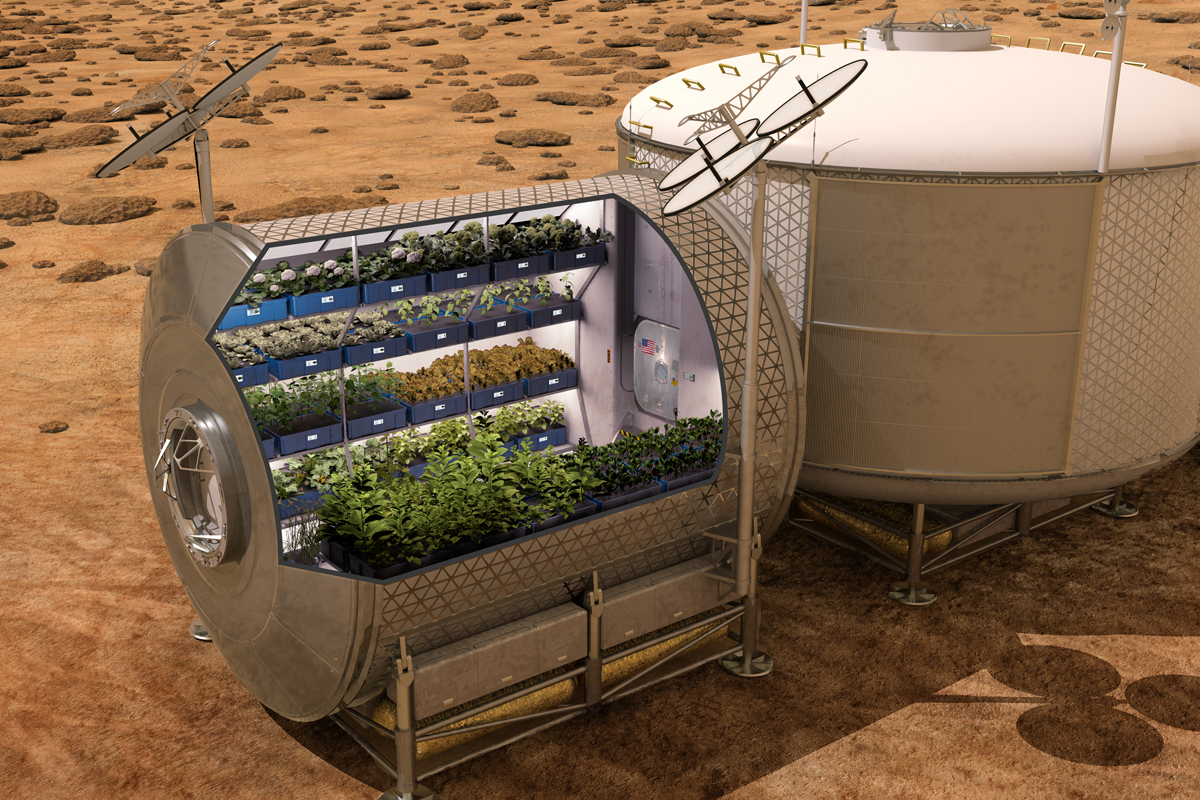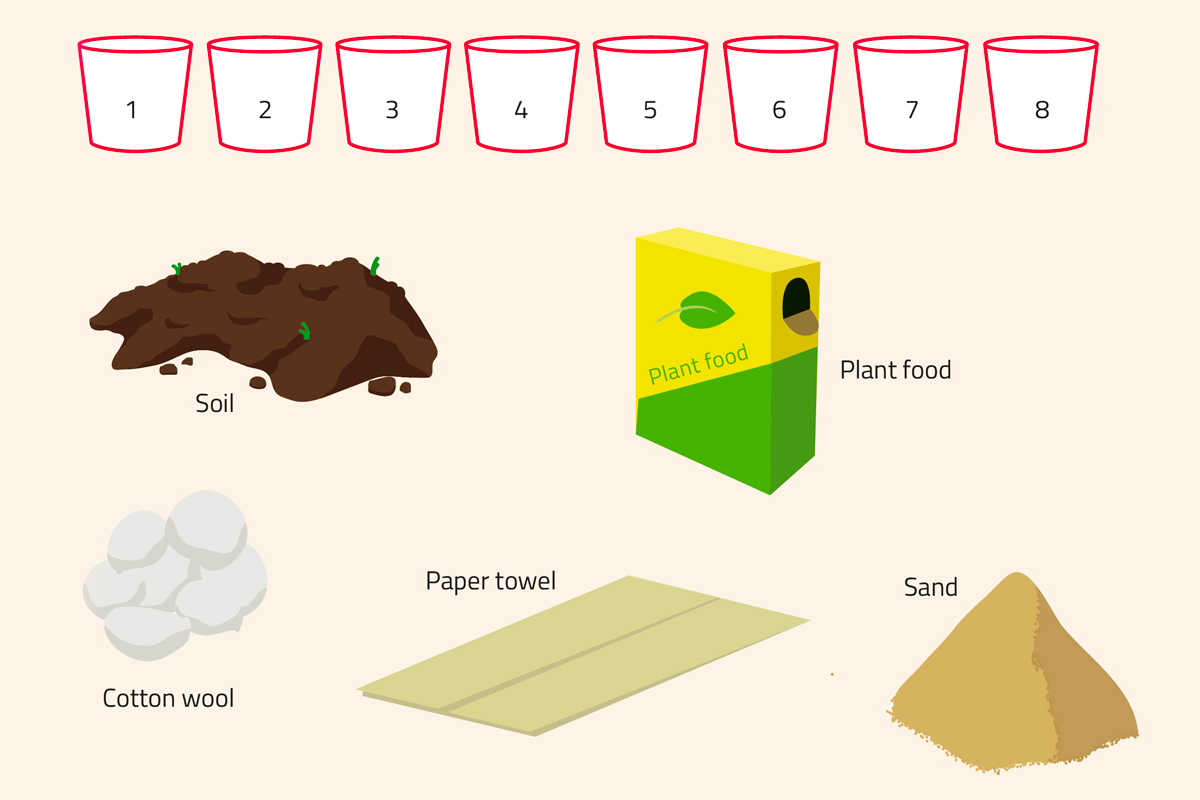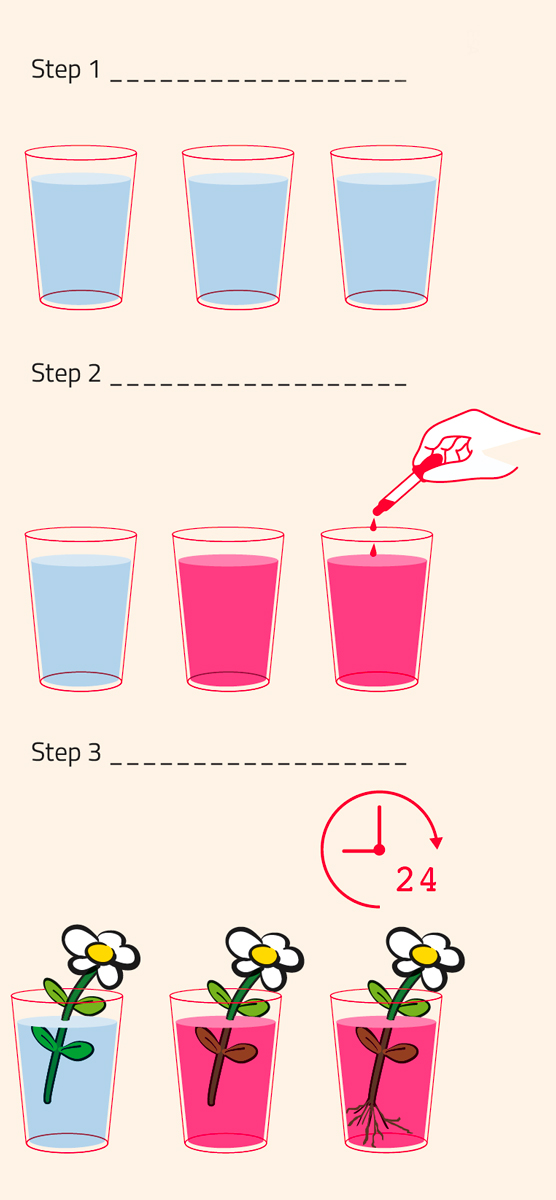Supporting materials
Download
Download this article as a PDF

Investigate the factors affecting plant growth and devise a plan for growing plants on the Moon.
When we think about space exploration, farming and agriculture are not often the first things that come to mind. Although they have been commonplace in human civilisation for millennia, these essential activities are fast becoming an integral part of research for enabling space exploration. Currently, the only human outpost in space is the International Space Station (ISS), which is supplied with air, food and water from Earth. Each astronaut needs approximately 1 kg of oxygen, 1 kg of dehydrated food and 3 litres of water per day. Providing these supplies for all astronauts on board the ISS is costly and impractical for long space missions. If humanity is to explore further into the cosmos, plants will have to be grown in flight – as a food source and more.

In space, the conditions required for plants to grow (such as water, light, nutrients and suitable temperature) are difficult to meet. This makes growing plants in space a challenging – but not impossible – task. In 2015, crew members of the ISS Expedition 44 had their first taste of space-grown food when they harvested a red romaine lettuce grown as part of NASA’s Veg-01 plant experiment. Since then, scientists have been researching novel ways of growing other plants in space.
When choosing which plants to grow, a variety of factors are considered – such as dietary value and yield. Two prime candidates are potatoes and dwarf wheat. Both are carbohydrate-rich foods with high calorific content, so they can help provide astronauts with enough energy to sustain them throughout a long mission. They are also robust plants that are adaptable to most conditions on Earth and provide a high yield without taking too much space to grow.
Plants are useful in space not only as a food source: astronauts are also hoping to use plants to create a self-sustaining circuit to supply astronauts with all the oxygen, water and food they need – without any resupply from Earth. For over 25 years, the European Space Agency (ESA) has been working towards this goal with its Micro-Ecological Life Support System Alternative programme (MELiSSA). The project seeks to perfect a life support system that could be flown to space. Human waste products (such as urine and exhaled carbon dioxide) would supply plants with the essential ingredients for growth, and in turn the plants would provide oxygen and food for humans, as well as filtering waste water. This area of research also has the potential to create methods for more sustainable food production on Earth.
In the following activities, students learn about the basic elements that plants need to grow. After completing activities 1–3, students apply what they have learned about plant growth to activity 4, in which they explore how to grow plants in space – a real-life challenge facing scientists today.
The activities use simple household materials and are suitable for students aged 8–12. The procedures require a number of small pots or containers: we created these from old plastic bottles by cutting off the bottom third of the bottle and using this as a pot.

Working in groups of two to four, students investigate how cress grows in different light conditions: constant darkness and the normal day-night cycle. It takes 30 minutes to complete the hands-on part of this activity and approximately one week for the cress to grow after planting.
Each group needs:
Instruct the groups as follows:
Students will observe that cress grown in the dark has white stems and yellow leaves, in contrast to cress grown with a normal day-night cycle, which has light green stems and bright green leaves. This is because in the absence of light, plants do not develop any chlorophyll – the pigment that gives plants their healthy green colour. The cress grown in the dark should also be noticeably taller, having used the energy stored in the seeds to accelerate their growth in search of light.
Compare your students’ predictions with their results, and discuss some of the following questions:
As a whole class, students plant radish seeds in different materials to determine which are best for growing plants. The hands-on part of this activity takes approximately 30 minutes, and there is a waiting period of one week.
The following materials, each to fill two pots:

Ask individual students to carry out different steps in the following procedure:
Students may be surprised to find that the seeds germinate in all eight pots. This is because seeds already contain some nutrients that allow the plant to begin growing. If the substrate contains nutrients, the plant will continue to grow. Nutrients are naturally present in soil, but for other materials (such as sand, cotton wool and paper towel) they can be added, for example in the form of liquid plant food. In the absence of added nutrients, the plant grows more slowly and eventually stops growing when the nutrient supply stored in the seed is depleted. This is why the radish seeds do not grow well in the pots with sand, cotton wool or paper towel without plant food.
The radish seeds usually grow best in cotton wool with the plant food mix. This is because cotton wool is more effective at holding water than soil or the other substrates, and because the plant food provides all the necessary nutrients for the plant’s initial development. If the plants were grown for a longer period, soil would provide the best base for their roots to expand, giving support and stability to the plant shoots.
Compare your students’ predictions with the results and discuss some of the following questions:

To investigate how water is transported within plants, students observe how flower petals change colour when dye is added to plant water. The procedure can be completed by small groups of 2–4 students or as a classroom demonstration. It takes approximately 15 minutes to complete the hands-on part of the activity and one day for the effects of the experiment to become visible.
Each group needs:
Instruct the groups as follows:
Students will observe that the flower without roots changes colour from the food colouring, especially along the edges of the petals. This is because plants transport water through their stem to other parts of the plant. The flower with roots, however, does not change colour from the food colouring. The roots act as a filter, preventing the food colouring from being transported to the rest of the plant. As a result, there is no colour change.
Compare your students’ predictions with the results, and discuss some of the following questions:
In teams of three or four, students apply their knowledge from the previous activities to devise a strategy for growing plants on the Moon. Students are provided with a fact card about the Moon to help them consider the particular space environment.
Each group will need:
Instruct the groups as follows:
One of the first challenges to growing plants on the Moon is the lack of liquid water and nutrients. Water is not readily available in rivers and oceans as it is on Earth, and lunar soil does not contain the nutrients required for growing plants. Students could suggest using a hydroponic system to overcome this challenge: plants are grown in a water-based, nutrient-rich solution without the need for soil. Water could potentially be sourced from surface ice near the Moon’s north and south poles, which under certain conditions could be converted to liquid water.
Another challenge is the Moon’s day-night cycle. One day on the Moon lasts approximately the same time as four weeks on Earth, so plants would need to adapt to two weeks of daylight and two weeks of darkness, or be placed in a light-controlled environment. This environment would need to be temperature-controlled to counteract extreme temperature variations. What’s more, there is virtually no atmosphere on the Moon so plants would need to be kept in a pressurised container filled with gases. Without an atmosphere for protection, the container would also help safeguard plants from space radiation.
To be sustainable, the container should have a system for recycling gases and water.
The authors would like to thank Monica Talevi, Christina Toldbo and all their team members at the ESA Education office who contributed to the development of these activities. Their thanks also go to ESA scientist Christel Paille for reviewing the educational activities and providing constructive and valuable comments.
This enlightening article combines two areas of science to create an interesting project for young students. In the set of activities, students understand the factors that affect plant growth and relate these to growing plants in space. All activities are easy to conduct and could be a good basis for understanding control variables in experimental design. The article is very useful and can be used for both upper elementary and lower secondary levels.
Dr Christiana Nicolaou, elementary teacher, Makedonitissa 3rd primary school, Cyprus
Download this article as a PDF